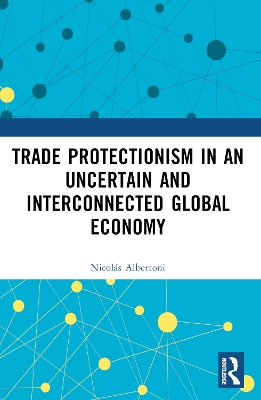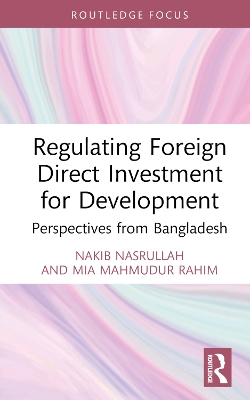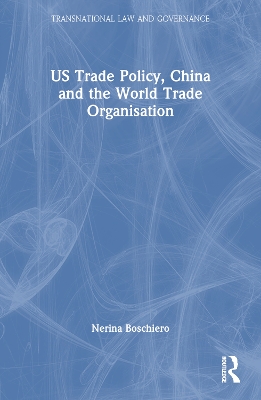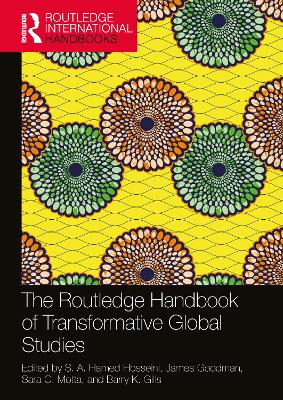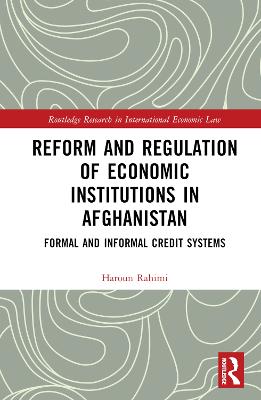Intellectual Property Law in Africa
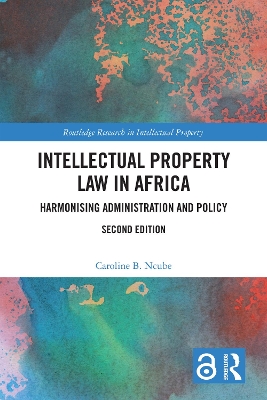 portes grátis
portes grátis
Intellectual Property Law in Africa
Harmonising Administration and Policy
Ncube, Caroline B.
Taylor & Francis Ltd
12/2024
248
Mole
9781032315386
Pré-lançamento - envio 15 a 20 dias após a sua edição
1.1 The Intellectual Property Landscape in Africa
1.2 Overview and History of National IP laws
1.3 IP and the public interest
1.3.1 A global public interest?
1.3.2 A continental, sub-regional and national public interest?
1.4 African states' diversity and the need for flexible and nuanced IP systems
1.4.1 African states' contribution to the articulation and formulation of the Development Agenda at WIPO
1.4.2 The Dakar Declaration on IP for Africa
1.4.3 TRIPS implementation by African states: a straight-jacket or nuancing tool?
1.4.4 IP policy focus area: TRIPS Flexibilities
1.4.3.1 Transition periods
1.4.3.2 Definition of invention & other patent grant related flexibilities
1.4.3.3 Parallel imports
1.4.3.4 Compulsory licenses & government use
1.4.3.5 Exceptions
1.4.5 Ongoing work on nuancing African IP systems
1.5 Book overview
Reference List
2. National IP Policy Frameworks in Africa
2.1 Introduction
2.2 Definitions
2.3 The importance of IP policies in Africa
2.4 Factors affecting IP policy design
2.4.1 Public engagement and interest representation
2.4.2 Governmental capacity and co-ordination
2.4.3 Global influences
2.4.4 Technical Assistance
2.4.4.1 Improvement of National, Sub-Regional and Regional IP Institutional and User Capacity
2.4.4.2 WIPO Framework for Developing National IP Strategies for Innovation
2.4.4.1 The Dakar Declaration on IP for Africa
2.5 State profiles: National IP Policies
2.5.1 States with national IP policies
Botswana
Egypt
The Gambia
Ghana
Madagascar
Malawi
Mozambique
Namibia
Nigeria
Rwanda
South Africa
Uganda
Zambia
Zimbabwe
2.5.2 States with IPDPs
Eswatini
Liberia
Mauritius
Sao Tome and Principe
Senegal
Seychelles
2.5.3 States with national IP policies under formulation
2.5.4 Evaluation of National IP Policies and IPDPs
2.6 Conclusion
Reference List
3. Regional Economic Communities, trade and IP
3.1 Introduction
3.2 Regionalism
3.2.1 Regional co-operation
3.2.2 Regional integration
3.2.3 Market Integration
3.2.4 Development integration
3.2.5 Neo-functional integration
3.3 The AU and the AEC
3.4 The relationship between community laws and national laws
3.5 COMESA
3.5.1 IP Regulatory Framework
3.5.2 IP Policy
3.6 EAC
3.6.1 IP Regulatory Framework
3.6.2 IP Policy
3.7 ECOWAS
3.7.1 IP Regulatory Framework
3.7.2 IP Policy
3.8 SADC
3.8.1 Regulatory Instruments
3.8.2 IP Framework and Guidelines
3.9 TFTA
3.10 Conclusion
Reference List
4: Sub-regional IP organisations
4.1 Introduction
4.2 ARIPO
4.2.1 Organs
Council of Ministers
Administrative Council
Secretariat
Board of Appeal
Committees
4.2.2 Regulatory Instruments
The Harare Protocol
Banjul Protocol on Marks
Arusha Protocol
Kampala Protocol
4.3 OAPI
4.3.1 Organs
Administrative Council
High Commission of Appeal
The Office of the Director General
4.3.2 Regulatory Instruments
(a) Substantive requirements
Annex II: Utility Models
Annex III: Trade marks and service marks
Annex IV: Industrial Designs
Annex X: New Varieties of Plant.
4.5 Conclusion
Reference List
5. Key considerations in the development of a continental IP system
5.1 Introduction
5.2 IP Cooperation
5.2.1 ASEAN
5.2.2 APEC
5.2.3 BRICS
5.3 Harmonisation
5.3.1 Methods of harmonisation
5.3.2 Advantages of harmonisation
5.3.3 Disadvantages of harmonisation
5.3.4 Lessons from existing harmonisation efforts
5.3.4.1 EU
5.3.4.2 MERCUSOR
Unification in OHADA
Conclusion
References
6. Continental IP co-operation: PAIPO
6.1 Introduction
6.2 Historical overview of the AU's efforts to establish PAIPO
6.2.1 Entry into force
6.3 How PAIPO will function
6.3.1 The legal nature of PAIPO
6.3.2 Objectives, principles and functions
6.3.3 Organs of PAIPO
6.3.3.1 The Conference of State Parties
6.3.3.2 The Council of Ministers
6.3.3.3 The Director General and Secretariat
6.3.3.4 The Board of Appeal
6.3.4 Organisational issues (PAIPO, OAPI and ARIPO)
6.3.4.1 Overlapping mandates
6.3.4.2 Relationship between PAIPO, ARIPO & OAPI
6.4 Policy imperatives - the PAIPO statute, development and Human Rights
6.5 Conclusion
7. Intellectual Property in the African Continental Free Trade Area
7.1 Introduction
7.2 Developmental underpinnings of the AfCFTA
7.3 AfCFTA Institutions
7.4 IP in the AfCFTA
7.5 Negotiation and Adoption of the Protocol on IPRs
7.6 Structure, Scope and Content of the Protocol on IPRs
7.6.1 Preamble
7.6.2 Part I: definition, objectives and scope
7.6.3 Part II: principles
7.6.4 Part III: Standards on IPRs
7.6.5 Part IV - VII cooperation on, enforcement, institutional arrangements and final provisions
7.7 Evaluation and Conclusion
References
8. Harmony or Discord? Lessons for the future African continental IP system
8.1 The status quo
8.2 pursuing the public interest
8.3 Continental Instruments and Institutions
1.1 The Intellectual Property Landscape in Africa
1.2 Overview and History of National IP laws
1.3 IP and the public interest
1.3.1 A global public interest?
1.3.2 A continental, sub-regional and national public interest?
1.4 African states' diversity and the need for flexible and nuanced IP systems
1.4.1 African states' contribution to the articulation and formulation of the Development Agenda at WIPO
1.4.2 The Dakar Declaration on IP for Africa
1.4.3 TRIPS implementation by African states: a straight-jacket or nuancing tool?
1.4.4 IP policy focus area: TRIPS Flexibilities
1.4.3.1 Transition periods
1.4.3.2 Definition of invention & other patent grant related flexibilities
1.4.3.3 Parallel imports
1.4.3.4 Compulsory licenses & government use
1.4.3.5 Exceptions
1.4.5 Ongoing work on nuancing African IP systems
1.5 Book overview
Reference List
2. National IP Policy Frameworks in Africa
2.1 Introduction
2.2 Definitions
2.3 The importance of IP policies in Africa
2.4 Factors affecting IP policy design
2.4.1 Public engagement and interest representation
2.4.2 Governmental capacity and co-ordination
2.4.3 Global influences
2.4.4 Technical Assistance
2.4.4.1 Improvement of National, Sub-Regional and Regional IP Institutional and User Capacity
2.4.4.2 WIPO Framework for Developing National IP Strategies for Innovation
2.4.4.1 The Dakar Declaration on IP for Africa
2.5 State profiles: National IP Policies
2.5.1 States with national IP policies
Botswana
Egypt
The Gambia
Ghana
Madagascar
Malawi
Mozambique
Namibia
Nigeria
Rwanda
South Africa
Uganda
Zambia
Zimbabwe
2.5.2 States with IPDPs
Eswatini
Liberia
Mauritius
Sao Tome and Principe
Senegal
Seychelles
2.5.3 States with national IP policies under formulation
2.5.4 Evaluation of National IP Policies and IPDPs
2.6 Conclusion
Reference List
3. Regional Economic Communities, trade and IP
3.1 Introduction
3.2 Regionalism
3.2.1 Regional co-operation
3.2.2 Regional integration
3.2.3 Market Integration
3.2.4 Development integration
3.2.5 Neo-functional integration
3.3 The AU and the AEC
3.4 The relationship between community laws and national laws
3.5 COMESA
3.5.1 IP Regulatory Framework
3.5.2 IP Policy
3.6 EAC
3.6.1 IP Regulatory Framework
3.6.2 IP Policy
3.7 ECOWAS
3.7.1 IP Regulatory Framework
3.7.2 IP Policy
3.8 SADC
3.8.1 Regulatory Instruments
3.8.2 IP Framework and Guidelines
3.9 TFTA
3.10 Conclusion
Reference List
4: Sub-regional IP organisations
4.1 Introduction
4.2 ARIPO
4.2.1 Organs
Council of Ministers
Administrative Council
Secretariat
Board of Appeal
Committees
4.2.2 Regulatory Instruments
The Harare Protocol
Banjul Protocol on Marks
Arusha Protocol
Kampala Protocol
4.3 OAPI
4.3.1 Organs
Administrative Council
High Commission of Appeal
The Office of the Director General
4.3.2 Regulatory Instruments
(a) Substantive requirements
Annex II: Utility Models
Annex III: Trade marks and service marks
Annex IV: Industrial Designs
Annex X: New Varieties of Plant.
4.5 Conclusion
Reference List
5. Key considerations in the development of a continental IP system
5.1 Introduction
5.2 IP Cooperation
5.2.1 ASEAN
5.2.2 APEC
5.2.3 BRICS
5.3 Harmonisation
5.3.1 Methods of harmonisation
5.3.2 Advantages of harmonisation
5.3.3 Disadvantages of harmonisation
5.3.4 Lessons from existing harmonisation efforts
5.3.4.1 EU
5.3.4.2 MERCUSOR
Unification in OHADA
Conclusion
References
6. Continental IP co-operation: PAIPO
6.1 Introduction
6.2 Historical overview of the AU's efforts to establish PAIPO
6.2.1 Entry into force
6.3 How PAIPO will function
6.3.1 The legal nature of PAIPO
6.3.2 Objectives, principles and functions
6.3.3 Organs of PAIPO
6.3.3.1 The Conference of State Parties
6.3.3.2 The Council of Ministers
6.3.3.3 The Director General and Secretariat
6.3.3.4 The Board of Appeal
6.3.4 Organisational issues (PAIPO, OAPI and ARIPO)
6.3.4.1 Overlapping mandates
6.3.4.2 Relationship between PAIPO, ARIPO & OAPI
6.4 Policy imperatives - the PAIPO statute, development and Human Rights
6.5 Conclusion
7. Intellectual Property in the African Continental Free Trade Area
7.1 Introduction
7.2 Developmental underpinnings of the AfCFTA
7.3 AfCFTA Institutions
7.4 IP in the AfCFTA
7.5 Negotiation and Adoption of the Protocol on IPRs
7.6 Structure, Scope and Content of the Protocol on IPRs
7.6.1 Preamble
7.6.2 Part I: definition, objectives and scope
7.6.3 Part II: principles
7.6.4 Part III: Standards on IPRs
7.6.5 Part IV - VII cooperation on, enforcement, institutional arrangements and final provisions
7.7 Evaluation and Conclusion
References
8. Harmony or Discord? Lessons for the future African continental IP system
8.1 The status quo
8.2 pursuing the public interest
8.3 Continental Instruments and Institutions

